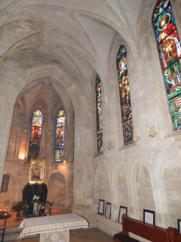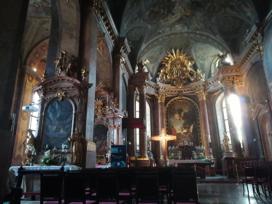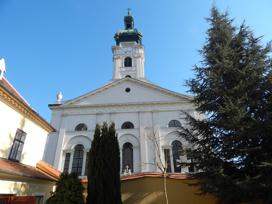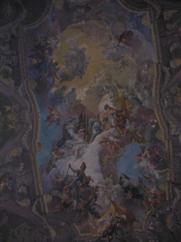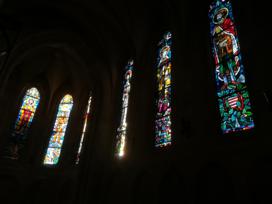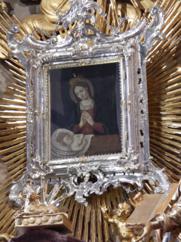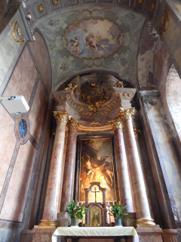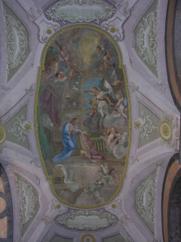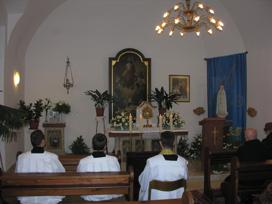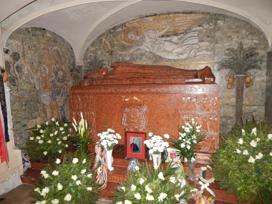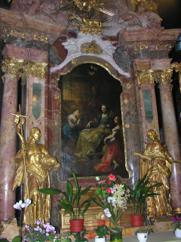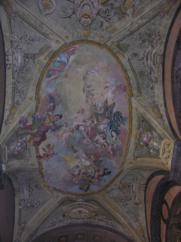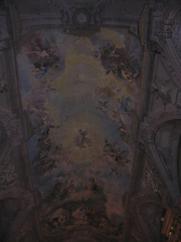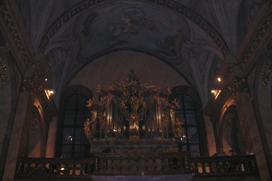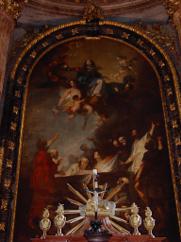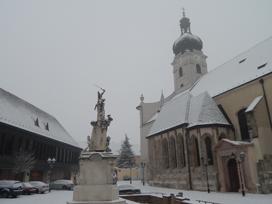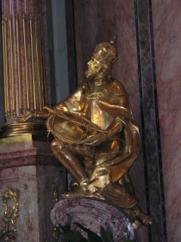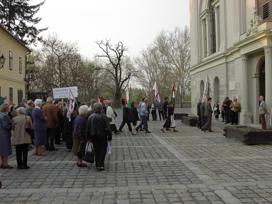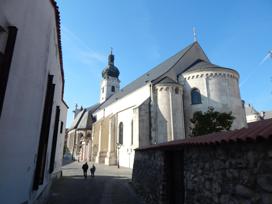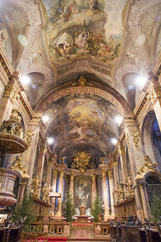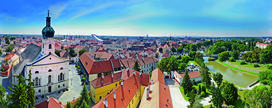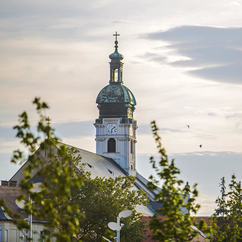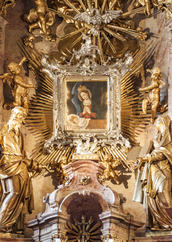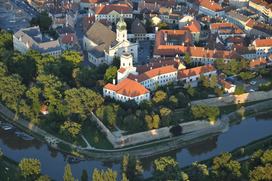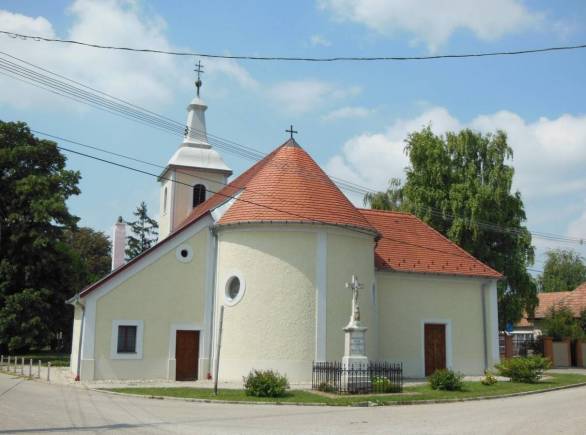Cathedral of our Lady (Basilica)
The main church of the Diocese of Győr, founded by King St Stephen in 1001, is located on Chapter Hill, which rises at the confluence of the Rába and the Danube.
It was first built in Romanesque style in the 11th century. It was rebuilt in Gothic style after the Mongol invasion and then extended with Gothic side-aisles and a side chapel in the 14th and 15th centuries. The St Ladislaus reliquary was preserved in the latter; this can now be viewed in the neighbouring visitors’ centre. Each 27 June, a procession accompanying the reliquary moves through the streets of the city centre. The church was rebuilt in Baroque style after the Turkish ravishes, under the office of the bishops Draskovich, Széchenyi and Zichy. The huge, stirring ceiling frescoes and altarpieces were painted by Franz Anton Maulbertsch and colleagues, while the “black” altars were made by Jacob Mollinarolo. The cathedral is a place of dual pilgrimage: many come to visit the devotional picture of the Virgin Mary which was brought to safety in Győr from Ireland and which shed tears of blood in 1697 as well as the grave of Bishop Vilmos Apor, who was martyred in 1945. In 1996, Pope John Paul II also prayed before the devotional picture of Mary and at Apor’s grave. The Pope beatified Bishop Vilmos in 1997 and raised the Győr Cathedral to the status of minor basilica.
The city-centre Way of the Cross begins from the basilica and ends here. It was created in 2019 with the work of contemporary artists and includes seven reliefs, two graphics and five paintings. The 14 stations clad in glass-concrete frames can be found on the walls of buildings or on free-standing frames.
(Győr’s devotional picture of the Virgin Mary and the St Ladislaus reliquary are listed as county treasures in the Győr-Moson-Sopron County Values Registry.)
